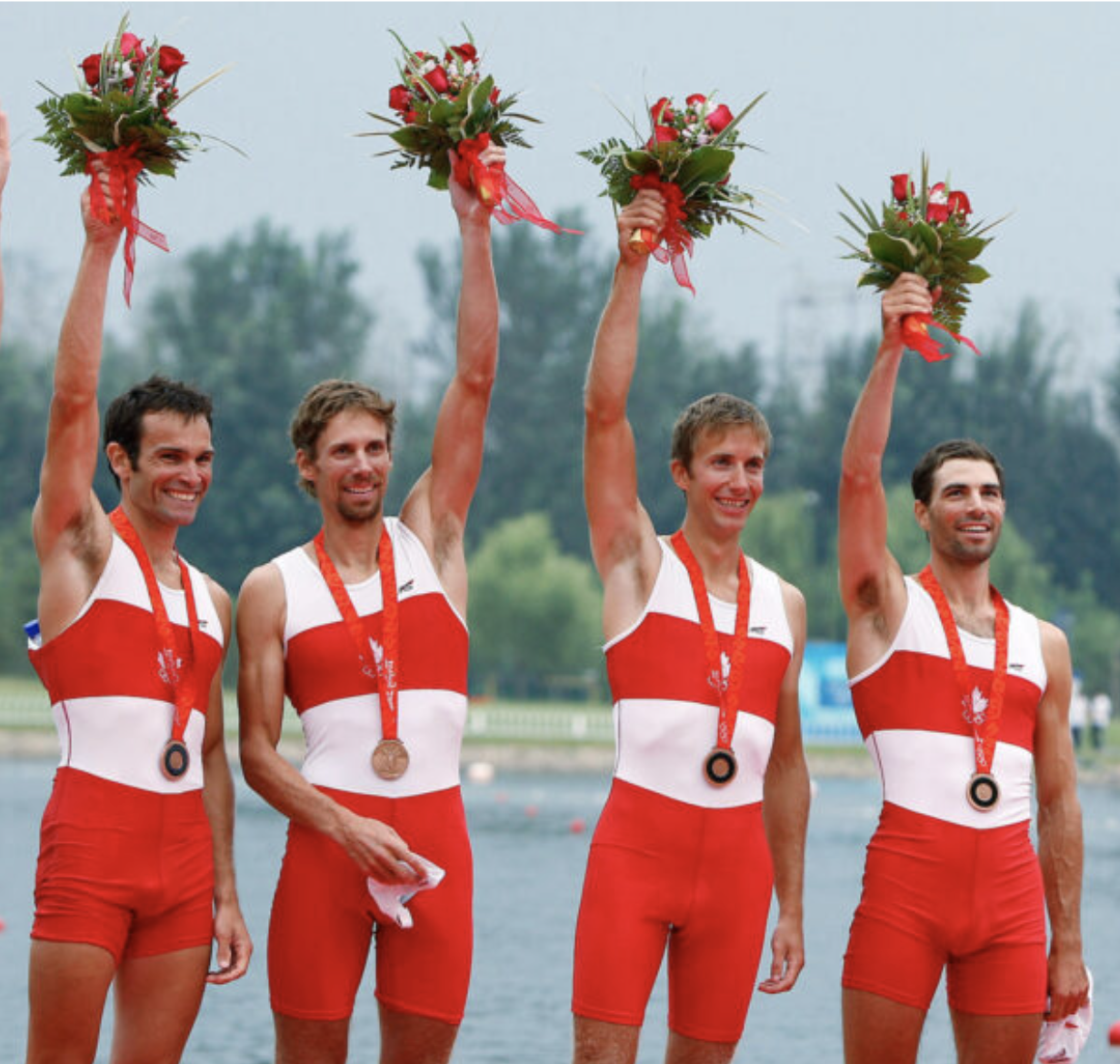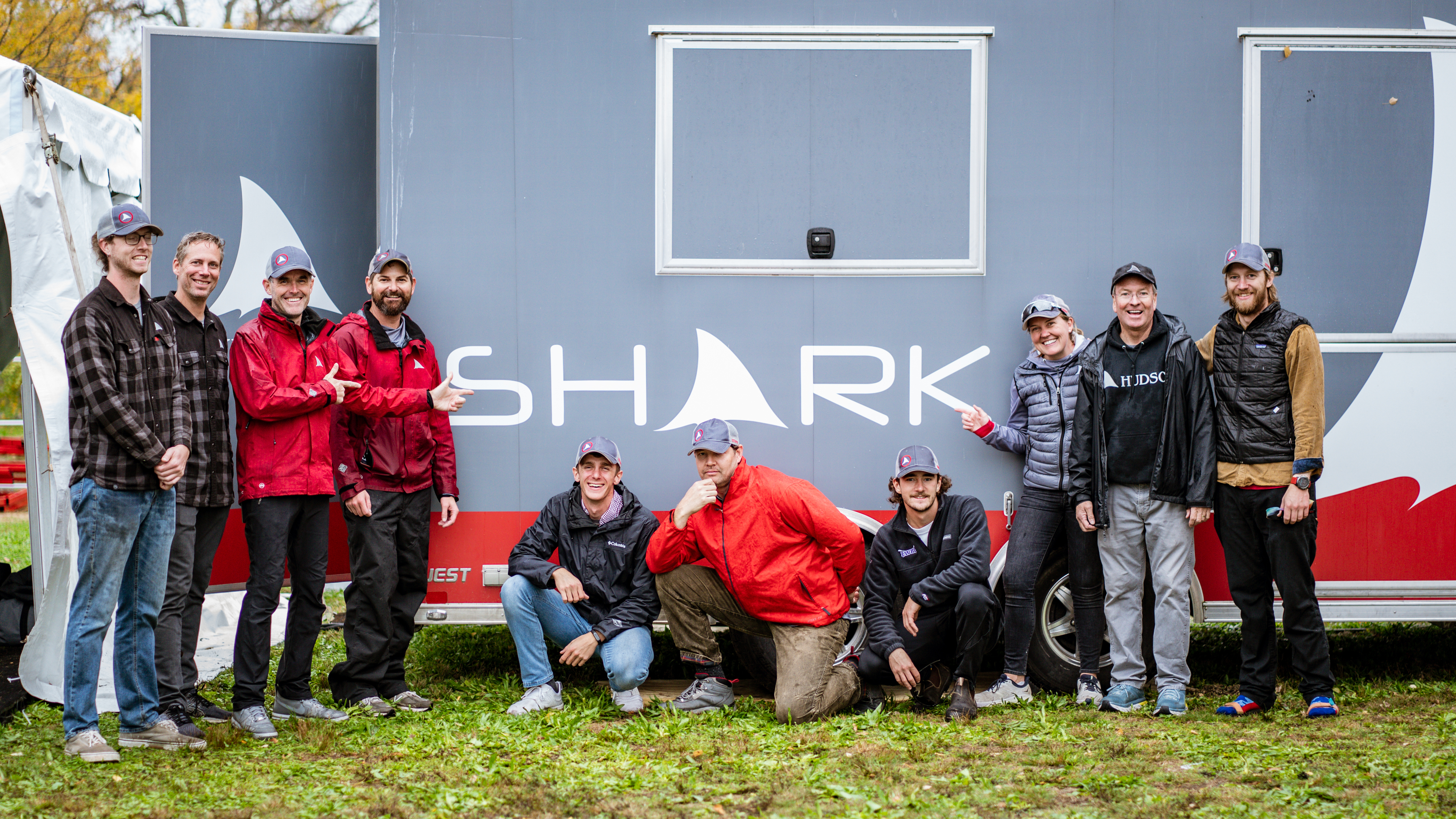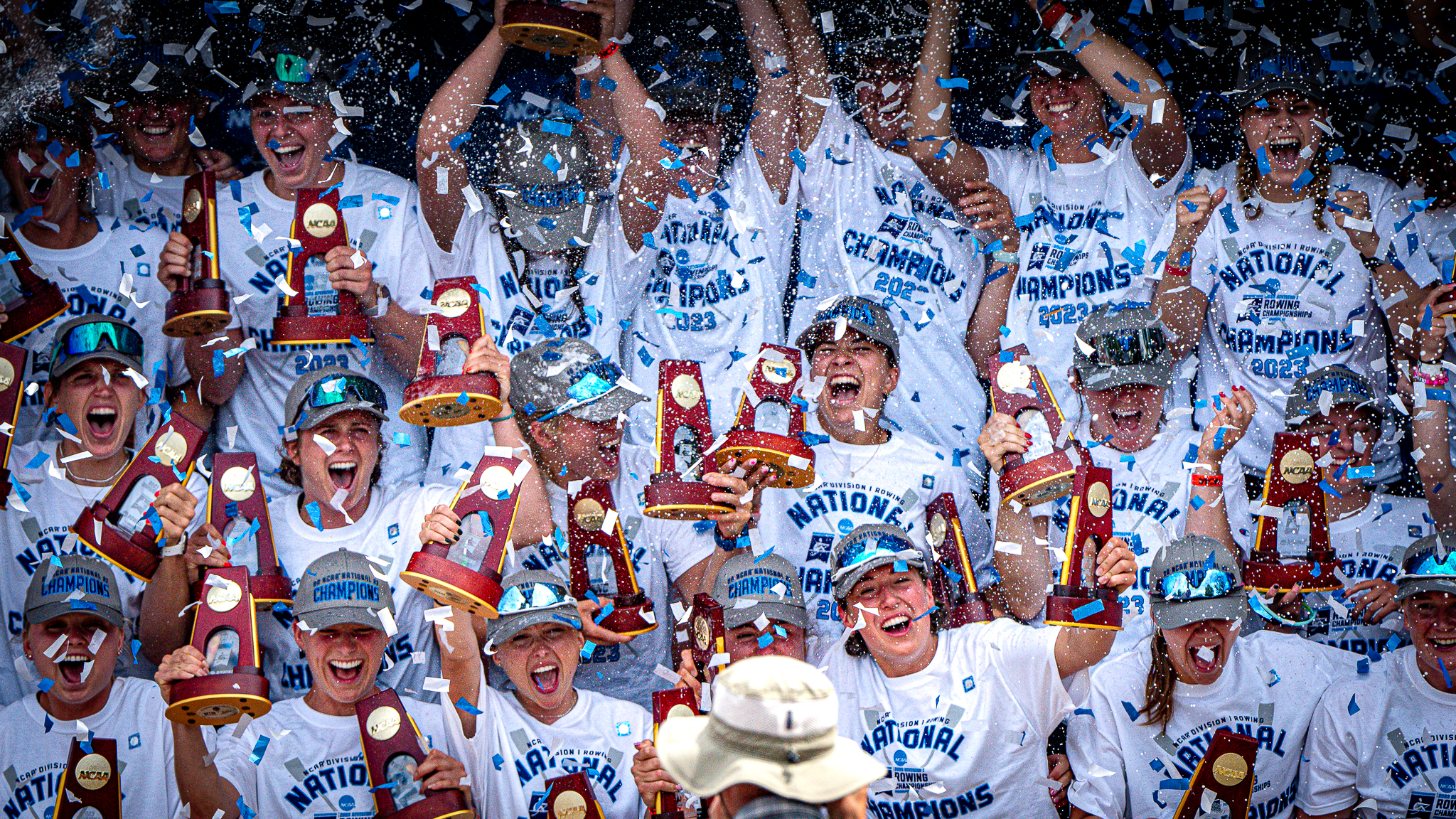The world of rowing is constantly flowing and evolving with HUDSON™ and its team at the heart of the action. Stay in current with articles and events straight from the SHARK's mouth, or explore more about HUDSON and our history in the industry.
In Memoriam - Jon Beare, HUDSON Co-Owner and North American Sales Manager
NOVEMBER 2023 | HUDSON mourns the loss of an irreplaceable member of our company and community. It is with a heavy heart we share the devastating news of the passing of Jon Beare, HUDSON Co-Owner and North American Sales Manager, who left us far too soon.
Jon left a significant impression on the rowing world throughout his career, both on and off the water. He represented Canada in the LM4- over three successive Olympic campaigns, culminating with a Bronze medal in 2008. Jon also served as Athlete Director on the RCA Board of Directors after formally retiring from competition. As a key member of the HUDSON management team Jon had a profound influence on the success of the company, managing sales and building the SHARK brand.
"We had deep seated respect for each other, and the way we thought, communicated, and lived private lives made our career partnership seamless and effortless. We had similar vision, work ethic, competitive drive, attention to detail, and pragmatic approach. A standout quality of Jon's was his professional unwavering moral compass and the line in the sand he drew between right and wrong. As the North American Sales Manager and valued partner in the ownership group at HUDSON, Jon kept us honest and in the lane, doing the ‘right’ thing as a company, presenting a strategy, project, or idea only after seeking peer review, opinion, and consensus,” said HUDSON Commercial Manager Craig McAllister.
 “Jon had a prolific international rowing career that was headlined by racing at three consecutive Olympic Games representing Canada in the LM4-, culminating in 2008 with a Bronze medal in Beijing. His versatility and talent was showcased by winning the Open Men’s Championship 1 x at Head of the Charles Regatta. It was a Hall of Fame rowing career that Jon rarely spoke about during his HUDSON career, and he would politely deflect recognition and accolades when I or others would publicly bring attention to his remarkable achievements.”
“Jon had a prolific international rowing career that was headlined by racing at three consecutive Olympic Games representing Canada in the LM4-, culminating in 2008 with a Bronze medal in Beijing. His versatility and talent was showcased by winning the Open Men’s Championship 1 x at Head of the Charles Regatta. It was a Hall of Fame rowing career that Jon rarely spoke about during his HUDSON career, and he would politely deflect recognition and accolades when I or others would publicly bring attention to his remarkable achievements.”
McAllister and Beare were friends, teammates and co-workers for over 30 years, dating back to their first row together at Western University.
“Our 30 year friendship began at Western University and was forged in 1995 racing together in the LM2-, representing Canada at the World Championships in Tampere, Finland. Over the past 17 years working together, we built the HUDSON SHARK brand and grew global sales, constantly evolving the front side of the company. After reflecting on our body of work together, it would not be a stretch to say Jon is my soul brother and brother in arms. Vale Jon, until we meet again."

While rowing was a big part of Jon’s life, his role as husband and father were most important. Our hearts are with his wife Danielle, and their two children Mya and Rhys.
Danielle said it best - “A beautiful human inside and out. His calm, determination, and empathy gave us an amazing life. Although we felt the universe was unfair with his diagnosis, he kept us strong as we caught ourselves saying many times that we were so lucky to have this life. Jon was an amazing Dad, Husband and friend. His love has filled us for a lifetime.”
For Jon, and his beautiful life.
https://www.earthsoption.com/obituaries/Jonathan-Barrington-BEARE?obId=29410975
SHARKS Attack 2023 NCAA Championships

JUNE 2023 | SHARKS earned multiple titles on the Cooper River at the 2023 NCAA Championships. Stanford University claimed the Division I Team title with their outstanding performances winning the 1st Varsity 8+ and 2nd Varsity 8+, after finishing runner-up in both 2021 and 2022. Wellesley College claimed their 3rd NCAA DIII Team Championship.
HUDSON programs have regularly reached the podium at the NCAA Championships. Over the past 13 events, programs that have raced in SHARKS have claimed 8 team titles across 4 different teams; include University of Virginia (2010, 2012), the Ohio State University (2013, 2014, 2015), University of Texas (2021, 2022) and now Stanford University (2023).
Craig McAllister, HUDSON Commercial Manager, has been focused on this market years before the first title, witnessing the impressive growth of women’s collegiate rowing. “The NCAA D1 Championship is second only behind the Senior World Championships in terms of high performance Women’s rowing and the 2023 Team Champions from Stanford University made it 8 team champions with 5 runner-ups from the past 13 events, across 5 different programs racing SHARKS,” McAllister said. “It’s been exciting to support a growing number of programs choosing HUDSON at this highly competitive, elite level of competition.”
Stanford University Head Coach Derek Byrnes credits their recent success to the team’s exceptional ability to recognize and harness the power of cohesion.
“The group understands the importance of holding one another to a high standard while also displaying unwavering support,” said Byrnes. “They relentlessly pursue success, setting high goals for themselves and each other and courageously attacking them, while also understanding the importance of having fun, trusting the process, and not taking themselves too seriously.”
University of Pennsylvania is one of the recent A-Final programs to race SHARKS at the NCAA’s. 2023 marks their second straight appearance at the competition, finishing 6th overall improving on their 11th place finish from 2022.
“Every NCAA regatta is distinct and this one was particularly special for us because it was so close to home!” said University of Pennsylvania Head Coach Wesley Ng. “Our training was very similar to how we practice during the regular season and it was very gratifying to see that our approach to championship rowing can yield great improvements.”
Additionally, the SHARKS have seen success at the Division III championships having won 7 of 13 team titles at the Division III level with Bates College and Wellesley College. Mercyhurst University, another HUDSON program, also won the Division II title in 2022.
Tufts University had their highest program finish (4th) and Varsity 8+ performance (4th) at this year’s championship. Tufts University Head Coach Noel Warner believes that this performance was fueled by the entire 40+ person group, not just those on the course.
“Back in September we talked about the opportunity each year brings— how can we create a great team? What are the core elements: bring energy to every moment of practice, be willing to take chances and to fail, treat each other with compassion, embrace competition as a gift” said Tufts University Head Coach Noel Warner. “The team has been building this over many years, starting way back before the pandemic, so it’s delightful to feel that energy really flowing in the group now.”
University of Virginia Head Coach Kevin Sauer was one of the first HUDSON programs dating back to 2008. The feedback he received from his athletes was positive and after choosing to race a demo boat and winning, he never looked back.
“The customer service, willingness to listen and adapt to ideas that I have had about how to improve the product and great people to work with has kept me as a loyal consumer,” said Sauer.
For more information on SHARK racing shells, please visit www.hudsonboatworks.com or contact your local HUDSON representative.
|
DI POINTS TROPHY (22 programs) Note: Top half (11) programs raced HUDSON |
|---|
| 1. Stanford University |
| 4. University of Texas |
| 6. University of Pennsylvania |
| 9. Southern Methodist University |
| 10. University of Virginia |
| 11. University of Michigan |
DI EVENTS
| Varsity 8+ A Final |
|---|
| 1. Stanford University // S8.21 |
| 4. University of Pennsylvania // U8.21 |
| 5. University of Texas // U8.21 |
| Second Varsity 8+ A Final |
|---|
| 1. Stanford University // S8.21 |
| 6. University of Texas // S8.21 |
| Varsity 4+ A Final |
|---|
| 1. University of Texas // U5.21 |
| 5. University of Virginia // U5.21 |
| 6. Princeton University // U5.21 |
| DIII POINTS TROPHY (8 programs) |
|---|
| 1. Wellesley College |
| 3. Bates College |
| 4. Tufts University |
DIII EVENTS
| Varsity 8+ A Final |
|---|
| 1. Wellesley College // U8.21 |
| 4. Tufts University // U8.21 |
| 6. Bates College // S8.21 |
| Second Varsity 8+ A Final |
|---|
| 1. Bates College // U8.21 |
| 2. Wellesley College // U8.21 |
| 4. Tufts University // U8.21 |
Made in London
SHARKS Top of the Class in ANZ School Championship Season
MAY 2022 | The 2022 school championship racing season in Australia and New Zealand resulted in many program milestones and athlete accolades. SHARK boats showed strength in numbers, placing many programs onto the podium with a few historical results.
Aon Maadi Cup (New Zealand)
|
Event |
Finish |
Program Name |
Boat |
|
Girls U17 4x+ |
1st |
Wakatipu |
S5.21 |
|
Boys U18 4x+ |
1st |
St. Paul’s |
S5.41 |
|
Boys U18 2- |
1st |
Mount Albert |
S2.31 |
|
Boys U18 4+ Springbok Shield |
1st |
Mount Albert |
S5.31 |
|
Girls U17 2x |
1st |
St. Andrew’s |
S2.32 |
|
Girls U18 4x+ |
3rd |
Wakatipu |
S5.21 |
|
Boys U17 8+ |
2nd |
Hamilton |
U8.21 |
|
Boys U18 8+ Maadi Cup |
1st |
Hamilton |
U8.21 |
2022 marks the 15th year that HUDSON has served as a regular supplier of boats to the region. In the past 14 Aon Maadi Cup Regattas, 8 Maadi Cups and 8 Springbok Shields have been won in a HUDSON. Hamilton claimed the Maadi Cup (8+) for the 11th time in program history this year in a time of 6:04.01, 3.21 seconds over 2nd place Canterbury. Mount Albert made program history winning the Springbok Shield (4+) for the first time at this event with a time of 6:38.63.
Full results from the 2022 Aon Maadi Cup can be found here.
2022 Australian Nationals
|
Event |
Finish |
Program Name |
Location |
Boat |
|
School Boy 8+ |
2nd |
Scotch College |
Melbourne |
U8.32 |
|
3rd |
Shore School |
Sydney |
U8.32 |
|
|
5th |
St. Kevin’s College |
Melbourne |
U8.32 |
|
|
School Boy 1x |
2nd |
Nudgee College |
Brisbane |
U1.42+ |
Victoria – APS Head of the River (VIC State Champs)
|
Event |
Finish |
Program Name |
Location |
Boat |
|
School Boy Open 1st 8+ |
1st |
Scotch College* |
Melbourne |
U8.32 |
|
3rd |
St. Kevin’s College* |
Melbourne |
U8.32 |
|
|
School Boy Open 1st 4+/x |
3rd |
Brighton Grammar |
Melbourne |
S5.31 |
New South Wales – AAGS Head of the River (NSW State Champs)
|
Event |
Finish |
Program Name |
Location |
Boat |
|
School Boy Open 1st 8+ |
2nd |
Shore School* |
Sydney |
U8.32 |
|
5th |
Scots College* |
Sydney |
U8.32 |
|
|
School Boy Open 1st 4+ |
1st |
Shore School |
Sydney |
S5.31 |
Queensland – GPS Head of the River (QLD State Champs)
|
Event |
Finish |
Program Name |
Location |
Boat |
|
School Boy Open 1st 8+ |
2nd |
Southport School |
Gold Coast |
U8.21 |
|
3rd |
Nudgee College* |
Brisbane |
U8.32 |
*SHARK boats claimed FIVE out of NINE podium finishes, racing the U8.32 in three (VIC, NSW, QLD), School Boys Head of the River.
